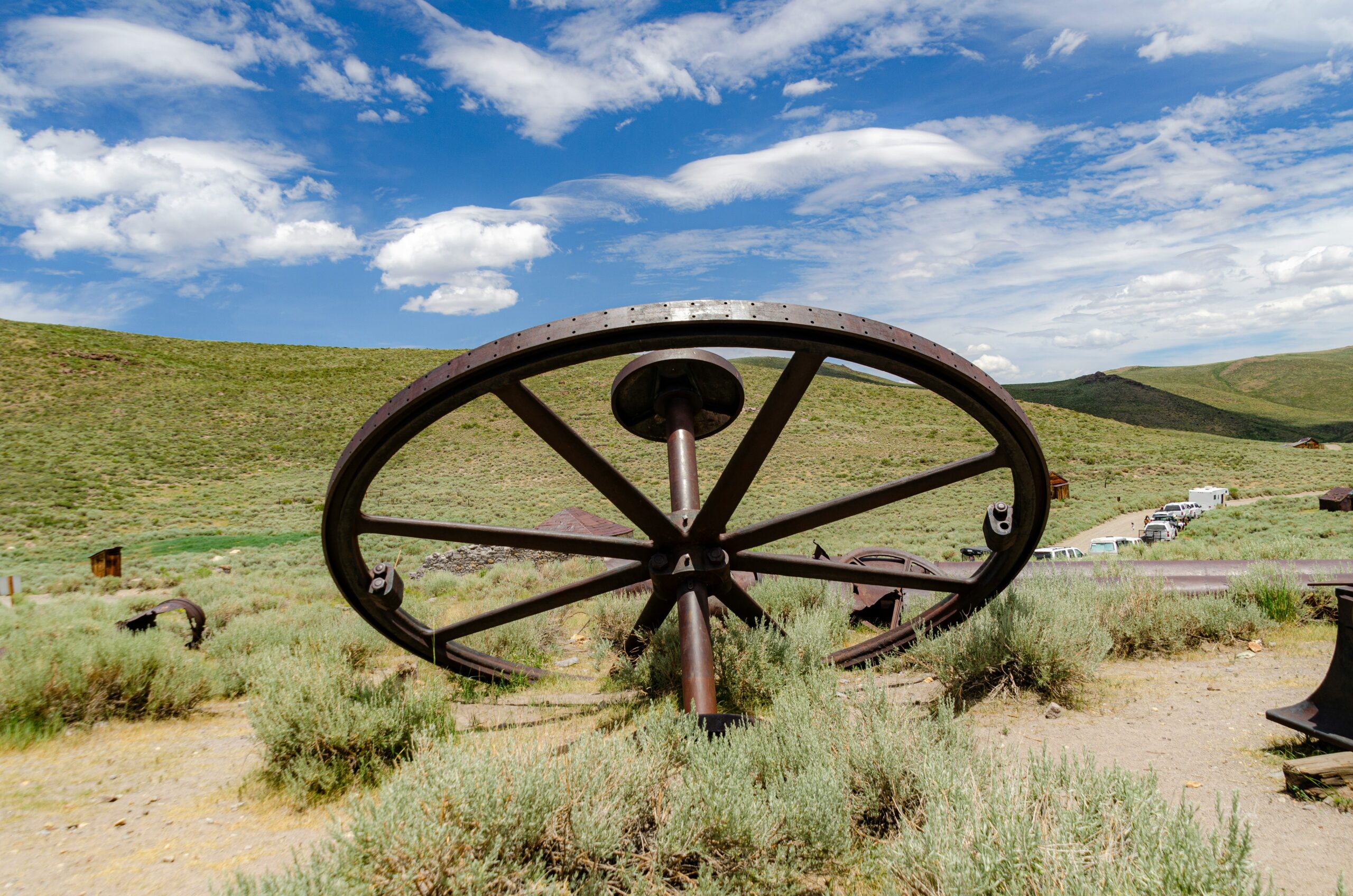High in the Bighorn Mountains of northern Wyoming sits one of the most mysterious and sacred places in North America: the Bighorn Medicine Wheel. At nearly 10,000 feet above sea level, this ancient stone circle lies exposed to sun, wind, and snow, yet it has remained intact for centuries. For Native peoples, it continues to be a site of ceremony and prayer. For travelers, it is a place of history, mystery, and reflection.
The Bighorn Medicine Wheel is not just a pile of rocks on a mountaintop. It is a cultural monument, an astronomical marker, and a reminder of the deep connection between people and land long before modern settlement.
What Is the Medicine Wheel?
The wheel itself is a circular arrangement of stones about 80 feet across. A central cairn of rocks is connected to the outer circle by 28 radiating lines or “spokes.” Several smaller cairns are built along the outer rim.
The design is simple, but its meaning is powerful. For many Native traditions, the wheel represents the circle of life, the four directions, and the connection between the earth and the sky. Similar wheels exist across the Plains, but the Bighorn site is one of the largest and best preserved.
History and Origins
Archaeologists believe the Bighorn Medicine Wheel was built 300 to 800 years ago, though some argue it could be even older. Its exact builders are unknown. Crow oral traditions tie it to their ancestors, and many Plains tribes including the Arapaho, Cheyenne, and Lakota recognize its significance.
The wheel may have served multiple purposes. Some researchers see it as an astronomical calendar, marking solstices and the rising of certain stars. Others emphasize its role as a ceremonial site, where offerings were made and prayers were held. For Native peoples today, it continues to be a living sacred place, not just an artifact of the past.
Visiting the Medicine Wheel
The Medicine Wheel is located in the Bighorn National Forest, near the town of Lovell, Wyoming. To reach it, visitors drive up U.S. Highway 14A, a steep and winding road that climbs into the mountains. At nearly 9,650 feet, the Medicine Wheel/Medicine Mountain National Historic Landmark is one of the highest accessible points in the range.
From the parking area, it is about a 1.5-mile walk along a gravel road to the site. The trail climbs gently but can feel challenging at altitude. Wheelchair access is available with advance arrangements through the Forest Service.
The path itself sets the mood. At this elevation, the air is thin and cool, even in midsummer. Alpine meadows open to sweeping views of the Bighorn Basin below. The sense of quiet and vastness grows as you approach the wheel.
At the Site
The Medicine Wheel is fenced to protect it, but you can walk the path around it and take in the full view. Prayer cloths and small offerings tied to the fence are signs of its continued spiritual use.
The simplicity of the design contrasts with the power of the place. Standing at the edge, you can imagine people gathering here for ceremonies, watching the sun rise in line with certain cairns, or offering prayers to the four directions.
There are no interpretive signs explaining a single “meaning” of the wheel. Instead, you are invited to reflect and experience the site with respect. Rangers and volunteers sometimes offer talks during summer months, adding context about its history and ongoing importance.
Respecting the Sacred
It is important to remember that the Bighorn Medicine Wheel is not just a tourist stop. It is a sacred place for Native communities. Visitors are asked to follow simple guidelines:
- Stay on the designated path around the wheel.
- Do not touch or remove stones.
- Respect prayer cloths and offerings left by others.
- Keep voices low and treat the site with reverence.
Many visitors describe feeling a sense of calm or awe here, even without a deep knowledge of its cultural background. Approaching it with humility helps preserve both its physical and spiritual integrity.
When to Visit
The Medicine Wheel is accessible only in the warmer months, typically from mid-June through mid-September. Snow often blocks the road outside that window. Summer days are mild, but storms can move in quickly, so bring layers. Early morning or late afternoon visits are especially beautiful, with long light across the mountains.
Because of its altitude, the site rarely feels crowded. You may share it with a few other travelers or find it nearly empty, enhancing the sense of solitude.
Nearby Attractions
Visiting the Medicine Wheel can be combined with other stops in the Bighorn Mountains and nearby towns.
- Bighorn Canyon National Recreation Area (Lovell): Dramatic cliffs and the Bighorn River, with hiking, boating, and scenic drives.
- Medicine Lodge Archaeological Site (Hyattville): Rock shelters with Native petroglyphs and pictographs.
- Shell Falls: A waterfall and interpretive area along Highway 14.
- Lovell and Sheridan: Small towns with museums, local diners, and Western heritage.
The drive itself is part of the experience, with hairpin turns, alpine lakes, and open range where moose and elk roam.
Cultural Context
For many Native Americans, the wheel is part of a larger spiritual geography. Medicine Mountain, where it sits, is considered a sacred landscape connected to stories, visions, and healing.
The concept of the medicine wheel is also widespread. Across North America, similar circular designs represent balance, cycles of life, and interconnectedness. The Bighorn wheel is unique in scale and location, but it resonates with traditions that extend far beyond Wyoming.
Non-Native visitors sometimes struggle to interpret it, wanting a clear definition of what it “means.” Yet part of the wheel’s power is its mystery. It resists simple explanations and instead invites personal reflection.
Practical Tips
- Altitude: At nearly 10,000 feet, the air is thin. Walk slowly, drink water, and be mindful of the elevation.
- Footwear: Wear sturdy shoes for the 1.5-mile gravel walk.
- Weather: Bring a jacket even in summer. Afternoon storms are common.
- Facilities: There are restrooms at the parking lot but no services at the wheel. Bring snacks and water.
- Timing: Allow 2–3 hours for the drive, walk, and time at the site.
Why It Matters
The Bighorn Medicine Wheel is a reminder that North America’s history did not begin with European settlement. Long before highways and towns, people came here to pray, to mark the passage of time, and to connect with the universe. That continuity remains, as Native peoples continue to visit and honor the site.
For modern travelers, it offers something rare: a chance to stand in a place that combines natural beauty, cultural significance, and spiritual presence. The wind, the open sky, the stones arranged in careful order—all invite reflection on humanity’s place in the larger world.
Final Thoughts
Visiting the Bighorn Medicine Wheel is not about entertainment. It is about slowing down, walking with intention, and standing in a place where history and spirit overlap. You may not leave with answers, but you will likely leave with a sense of perspective.
In a state known for its wide landscapes and cowboy culture, the wheel reminds us of deeper histories. It shows that the mountains hold stories older than roads and railroads, stories that still matter today.
If you are traveling through northern Wyoming, take the time to make the climb to Medicine Mountain. The view is unforgettable, but the feeling of standing at the wheel—wind in your face, sky overhead, and centuries of tradition beneath your feet—is what will stay with you.

